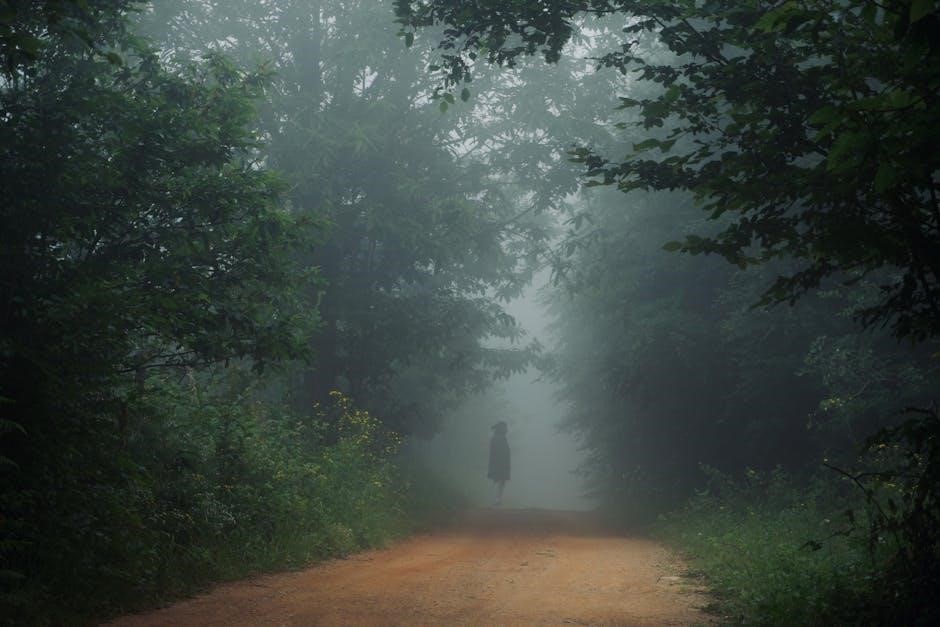Enchanting is a key profession in WoW Cataclysm Classic‚ allowing players to enhance gear with magical properties. This guide provides a comprehensive approach to mastering Enchanting‚ from basics to advanced techniques‚ ensuring players can maximize their character’s potential and contribute effectively to raids and PvP.
1.1 What is Enchanting in WoW Cataclysm Classic?
Enchanting is a crafting profession in WoW Cataclysm Classic that allows players to imbue gear with magical properties. By using reagents like dusts‚ essences‚ and shards‚ players can create powerful enchants to enhance weapons‚ armor‚ and other items. This profession also enables the ability to disenchant items‚ breaking them down into their magical components. Blood Elf characters benefit from a +5 Enchanting skill bonus due to their Arcane Affinity‚ making it easier to craft and level the profession.
1.2 Importance of Enchanting in Cataclysm Classic
Enchanting is a vital profession in WoW Cataclysm Classic‚ as it enables players to enhance their gear with powerful magical properties. By adding stats like strength‚ agility‚ or stamina‚ players can significantly improve their performance in both PvE and PvP. Additionally‚ Enchanting allows for the creation of high-demand items‚ making it a lucrative profession for crafting and selling enchants on the Auction House. This profession is essential for optimizing character builds and securing a competitive edge in raids and battlegrounds.

Leveling Enchanting from 1 to 525
Mastering Enchanting in WoW Cataclysm Classic requires a strategic approach. This section provides a detailed roadmap to efficiently level your Enchanting skill from 1 to 525‚ ensuring minimal material waste and optimal progression.
2.1 Leveling Enchanting: 1-75
Starting your Enchanting journey in WoW Cataclysm Classic begins with crafting basic items. Begin by creating a Runed Copper Rod‚ which is essential for enchanting. Use Strange Dust and Lesser Magic Essence to craft low-level enchants like Enchant Bracer: Minor Health. These early recipes are cost-effective and provide steady skill progression. Blood Elf characters gain an extra 5-10 Enchanting skill due to their racial bonus‚ allowing recipes to stay orange for longer. Focus on crafting items like Enchant Cloak: Minor Agility and Enchant Boots: Minor Stamina to efficiently reach level 75.
2.2 Leveling Enchanting: 76-150
At level 76‚ focus on crafting mid-tier enchants to efficiently progress. Use materials like Soul Dust and Greater Magic Essence to create recipes such as Enchant Bracer: Minor Strength and Enchant Gloves: Minor Haste. These provide steady skill gains and are in demand on the Auction House. Continue using the Runed Silver Rod for higher-level enchants. This range is crucial for transitioning into more advanced recipes while maintaining cost efficiency and profit potential.
2.3 Leveling Enchanting: 151-225
From 151 to 225‚ focus on higher-tier recipes using Dream Dust and Greater Cosmic Essence. Crafting enchants like Enchant Chest: Stamina and Enchant Bracer: Greater Intellect provides consistent skill gains. Utilize the Runed Gold Rod for more advanced enchants. Blood Elf characters benefit from their passive‚ allowing recipes to stay orange longer‚ reducing material costs. This range bridges the gap to expert-level enchants‚ ensuring a smooth progression toward higher skill levels and increased profitability.
2.4 Leveling Enchanting: 226-300
From 226 to 300‚ focus on crafting high-demand enchants like Enchant Gloves: Crusher and Enchant Boots: Vitality. These require materials such as Lesser Cosmic Essence and Dream Dust‚ which can be obtained through disenchanting or crafting. This range introduces more complex recipes‚ ensuring steady skill progression. Blood Elf characters can leverage their passive bonus to minimize material costs. Continue prioritizing recipes that offer the best skill gains per material to efficiently reach 300.
2.5 Leveling Enchanting: 301-375
From 301 to 375‚ focus on crafting high-end enchants like Enchant Chest: Mighty Resilience and Enchant Bracers: Brawn. These require rare materials such as Nightmare Tears and Large Prismatic Shards‚ obtained through disenchanting high-level items or crafting. This range introduces more complex recipes‚ offering significant skill gains. Blood Elf characters can utilize their passive bonus to reduce material costs further. Prioritize recipes with high demand to ensure efficient progression and profitability in the later stages of your Enchanting journey.
2.6 Leveling Enchanting: 376-450
Reaching 376-450 requires crafting high-demand enchants like Enchant Chest: Mighty Resilience and Enchant Boots: Surefooted. These recipes use rare materials such as Dream Shards and Abyss Crystals‚ often obtained from disenchanting level 70-80 items. This phase offers significant skill gains and prepares you for the final stretch to 450. Focus on optimizing material costs and ensuring a steady supply of components to maintain progress and profitability in the Cataclysm Classic economy.
2.7 Leveling Enchanting: 451-525
Reaching the final stretch‚ leveling from 451 to 525 requires crafting high-end enchants like Enchant Chest: Mighty Resilience and Enchant Boots: Surefooted. These recipes demand rare materials such as Dream Shards and Abyss Crystals‚ typically obtained from disenchanting high-level items. This phase is crucial for maximizing your enchanting skill‚ enabling access to the most profitable and sought-after enchants in Cataclysm Classic. Ensure a steady supply of materials to efficiently reach the max skill level of 525.

Blood Elf Enchanting Bonus
Blood Elves receive a unique bonus‚ Arcane Affinity‚ granting them an additional 10 Enchanting skill points. This bonus reduces material costs and keeps recipes orange for longer‚ aiding in efficient skill progression and gold savings.
3.1 Arcane Affinity and Its Benefits
Blood Elves possess a unique racial trait called Arcane Affinity‚ which grants them an innate +10 bonus to their Enchanting skill. This passive ability allows recipes to remain in the “orange” range for 10 additional skill levels‚ significantly reducing material costs and the need for higher-level crafting materials. This perk is especially valuable during the early stages of leveling Enchanting‚ as it enables players to progress more efficiently and save gold by minimizing wasted resources.
3.2 How Blood Elf Passive Affects Enchanting
The Blood Elf passive‚ Arcane Affinity‚ enhances Enchanting by boosting the skill level‚ allowing recipes to stay viable longer. This reduces the need for frequent material upgrades‚ saving gold and time. It also enables crafting higher-tier enchants earlier‚ giving Blood Elves a competitive edge in both crafting and selling enchants on the Auction House. This racial bonus makes Blood Elves ideal for players focusing on Enchanting as their primary profession in Cataclysm Classic.

Choosing the Right Companion Profession
Selecting a complementary profession like Tailoring or Jewelcrafting enhances Enchanting efficiency. These professions provide materials and gear for disenchanting‚ reducing costs and maximizing gold-making potential in Cataclysm Classic.
4.1 Tailoring as a Companion Profession
Tailoring is an ideal companion profession for Enchanting as it provides crafted items like cloaks‚ robes‚ and bolts of cloth. These items can be disenchanted into valuable materials‚ reducing reliance on the Auction House. Blood Elves benefit from their Arcane Affinity‚ granting an extra Enchanting skill‚ making it easier to craft and disenchant items. This synergy allows players to create materials efficiently‚ saving gold and enhancing their Enchanting progress in Cataclysm Classic.
4.2 Benefits of Combining Enchanting with Tailoring
Combining Enchanting with Tailoring offers significant benefits‚ including cost savings and self-sufficiency. Tailors can craft items specifically for disenchanting‚ providing a steady supply of materials like essences and dust. Blood Elves gain an extra 5 Enchanting skill‚ allowing more efficient crafting. This synergy reduces reliance on the Auction House‚ enabling players to level Enchanting faster and craft high-demand enchants for profit‚ making it a powerful combination in Cataclysm Classic.

Disenchanting Materials and Crafting
Disenchanting allows players to break down unwanted gear into valuable materials like dust and essences. These materials are crucial for crafting enchants or selling for profit‚ making it a key part of the Enchanting process.
5.1 Disenchanting Gear for Materials
Disenchanting gear is a core part of Enchanting‚ allowing players to extract valuable materials like dust and essences from unwanted items. These materials are essential for crafting enchants or selling for gold. By breaking down gear‚ players can efficiently gather resources needed for their crafting needs or profit through the Auction House. This process is crucial for both progression and maximizing gold income in Cataclysm Classic.
5.2 Crafting Enchanting Materials for Profit
Crafting enchanting materials is a profitable strategy in Cataclysm Classic. By creating items like wands‚ rods‚ or enchanted gear‚ players can disenchant them into valuable materials. These materials‚ such as Arcane Dust and Essences‚ are in high demand on the Auction House. Crafting and disenchanting can yield significant gold‚ especially when targeting high-demand materials. This method ensures a steady income while leveling or preparing for raids‚ making it a key part of a profitable Enchanting strategy.

Maximizing Gold with Enchanting
Maximizing gold with Enchanting in Cataclysm involves selling high-demand enchants‚ disenchanting gear for valuable materials‚ and crafting items to meet market needs‚ ensuring consistent profit and financial growth.
6.1 Selling Enchants on the Auction House
Selling enchants on the Auction House is a lucrative way to generate gold. By crafting high-demand enchants and listing them at competitive prices‚ players can attract buyers. Monitoring market trends and timing sales during peak demand periods‚ such as raid nights or new content releases‚ maximizes profits. Additionally‚ offering enchants on vellum allows flexibility for buyers‚ increasing the likelihood of sales. This method ensures steady gold income with minimal effort.

6.2 Making Gold through Disenchanting
Disenchanting unwanted or low-quality gear is a reliable gold-making strategy. By breaking down items into base materials like essences and dust‚ players can resell these components at a profit. High-demand materials from rare or epic items fetch premium prices. Additionally‚ crafting enchants from these materials and selling them on the Auction House further amplifies earnings. This dual approach maximizes gold income while efficiently utilizing otherwise discarded gear‚ making disenchanting a valuable skill for any enchanter.

Cataclysm-Specific Enchants
Cataclysm introduced unique enchants that enhance gear with powerful stats and effects. These enchants cater to various playstyles‚ offering improvements for both PvE and PvP‚ making them highly sought after.
7.1 New Enchants Introduced in Cataclysm
Cataclysm brought a wave of new enchants‚ each offering unique bonuses tailored to different classes and playstyles. These new additions included powerful stat enhancements like Arcanum of Hyjal and Sovereign Dreadstones‚ which provided significant boosts to strength and stamina. Enchants such as Greater Magic Wand and Runed Copper Rod also became essential for crafting and enhancing magical items. These enchants not only improved gear efficiency but also opened new avenues for profit through the Auction House.
7;2 Most Profitable Enchants in Cataclysm
The most profitable enchants in Cataclysm include high-demand options like Arcanum of Hyjal and Bold Cardinal Rubys‚ which offer significant stat boosts. Enchants like Sovereign Dreadstones and Greater Magic Wand also saw strong demand due to their versatility. Crafting and selling these enchants on the Auction House could yield substantial gold‚ especially when paired with disenchanting rare gear for valuable materials. Players often prioritize these enchants for their effectiveness in raids and PvP.

Training and Skill Progression
Visiting trainers to learn new enchanting ranks is crucial. Blood Elf characters gain an extra 5 skill points from Arcane Affinity‚ enhancing progression. Trainers unlock higher skill levels‚ allowing mastery of advanced enchants.
8.1 Training New Ranks of Enchanting
Training new ranks of Enchanting is essential for progression. Visit trainers in major cities to unlock higher-level recipes. Blood Elves benefit from Arcane Affinity‚ granting +5 skill‚ making lower-level recipes remain usable longer. This reduces material costs and accelerates leveling. Each rank unlocks new enchants‚ improving efficiency and profitability. Regularly checking with trainers ensures access to the latest recipes‚ optimizing skill progression and material use. This approach minimizes waste and maximizes efficiency in reaching 525.
8.2 Importance of Trainers in Skill Development
Trainers are crucial for advancing Enchanting skills‚ as they unlock new recipes and higher ranks. Visiting trainers in major cities like Stormwind or Orgrimmar ensures access to the latest enchants. Blood Elves benefit from their passive Arcane Affinity‚ which boosts starting skill‚ making trainers’ guidance even more valuable. Regular trainer visits prevent skill plateaus‚ enabling discovery of new materials and techniques. This ensures continuous progression and mastery of the profession‚ keeping your enchants relevant and effective in Cataclysm Classic.